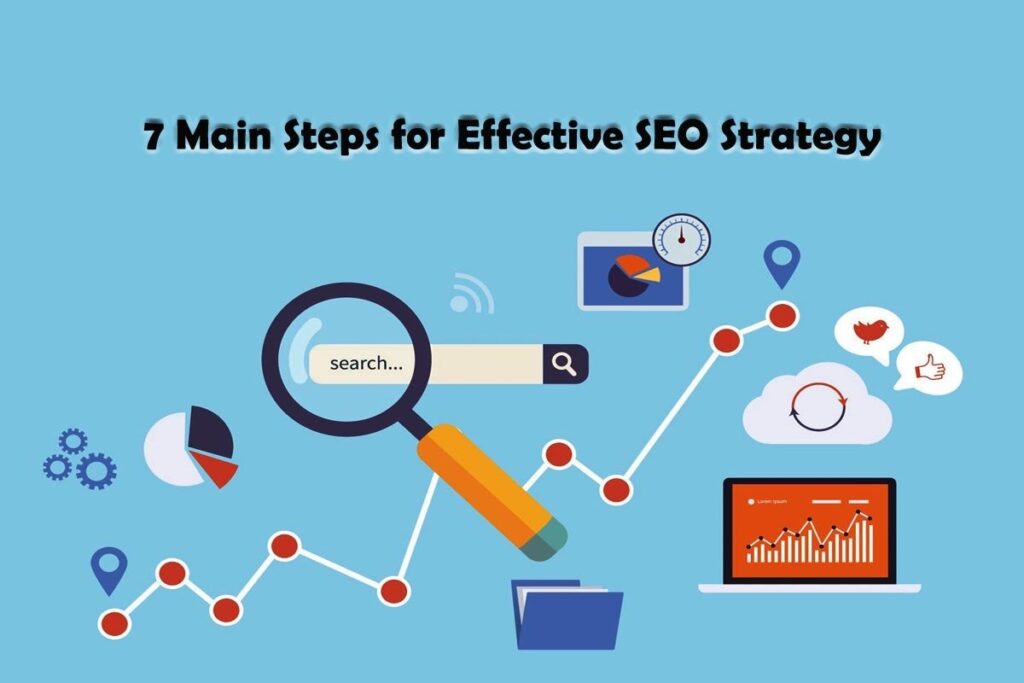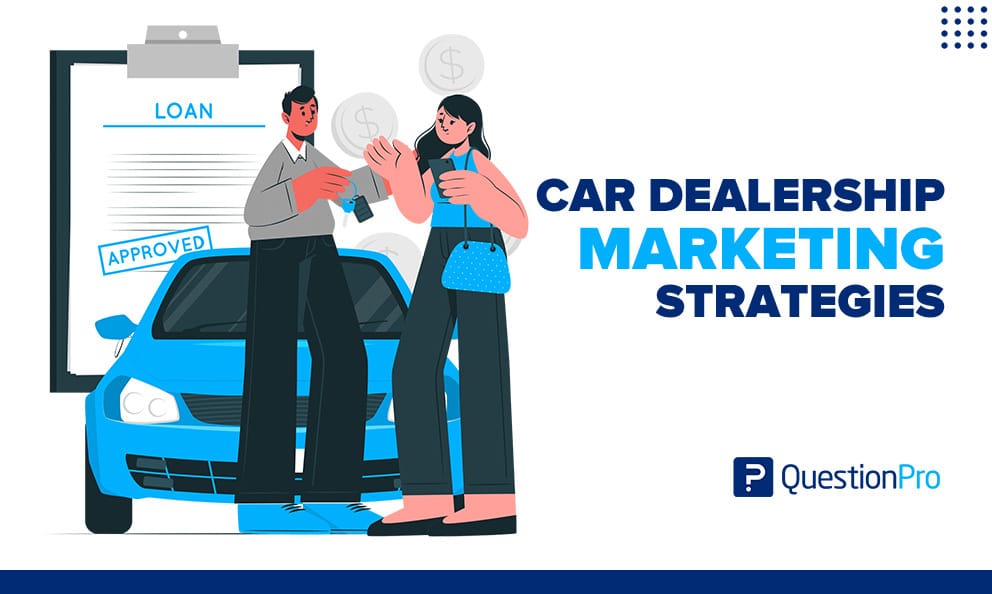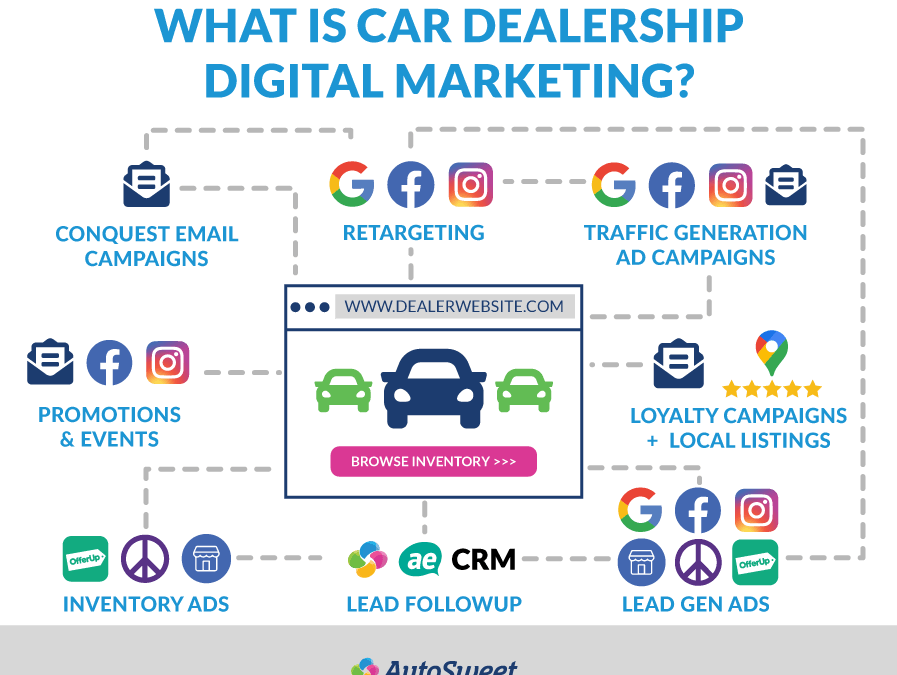If you’re a car dealership looking to enhance your online presence and drive more traffic to your website, then this article is for you. In this comprehensive guide, we will explore seven proven and effective SEO strategies specifically tailored for car dealerships. From optimizing your website’s content to leveraging local search engine optimization, we will delve into the tactics that will help you rank higher in search engine results and attract more potential customers to your dealership. So, strap in and get ready to boost your online visibility and increase your sales with these powerful SEO techniques.

This image is property of www.sendiancreations.com.
Need Automotive SEO – Start Here
Conduct Keyword Research
Identify relevant keywords
When it comes to optimizing your car dealership’s website, conducting keyword research is a crucial first step. This involves identifying the keywords and phrases that are most relevant to your business and target audience. Think about what potential customers might search for when looking for a car dealership, such as “car dealership near me” or “best deals on used cars.” By identifying these keywords, you can tailor your website’s content to align with what your audience is searching for.
Use keyword research tools
To conduct keyword research effectively, it’s helpful to utilize keyword research tools. These tools provide valuable insights into search volume, competition, and related keywords. Popular tools like Google Keyword Planner, SEMrush, and Moz Keyword Explorer can help you identify the most relevant and high-performing keywords for your website. This information can guide your content creation and optimization efforts.
Consider search volume and competition
When selecting keywords for your car dealership’s website, it’s important to consider both search volume and competition. Search volume refers to the number of times a particular keyword is searched for in a given period. Look for keywords with a decent search volume to ensure that there is enough demand for the content you create. Additionally, consider the level of competition for each keyword. High competition means that many other websites are targeting the same keyword, making it harder to rank. Finding a balance between search volume and competition is key to selecting the right keywords for your website.
Focus on long-tail keywords
In addition to targeting broader keywords, it’s also advantageous to focus on long-tail keywords. These are more specific phrases that potential customers might search for when looking for a car dealership. For example, “affordable used car dealerships in [your location]” or “auto repair services for luxury cars.” Long-tail keywords usually have lower search volume but can be easier to rank for and attract highly targeted traffic. By including a mix of both broader and long-tail keywords in your content, you can increase your chances of reaching potential customers.
Target location-based keywords
Since car dealerships typically cater to customers in a specific geographic area, targeting location-based keywords is essential. Incorporate your city or region into your keywords to attract local customers who are actively searching for a car dealership near them. For example, “car dealership in [your location]” or “best car deals in [your location].” Targeting location-based keywords helps you connect with nearby customers looking to purchase a car or utilize your dealership’s services.
Optimize Website Structure
Create a user-friendly and mobile-responsive website
When it comes to optimizing your car dealership’s website, user-friendliness should be a top priority. Ensure that your website is easy to navigate, visually appealing, and provides a seamless user experience. This includes having clear and intuitive menus, fast-loading pages, and a responsive design that adapts to different screen sizes. With more people using mobile devices to browse the internet, having a mobile-responsive website is crucial for attracting and retaining potential customers.
Organize content into logical categories
To improve the user experience and optimize your website’s structure, organize your content into logical categories. This makes it easier for visitors to find the information they’re looking for and encourages them to stay on your site longer. For a car dealership website, you might have categories such as “New Cars,” “Used Cars,” “Services and Repairs,” “Financing,” and “Contact Us.” By structuring your website in this way, you create a clear and intuitive navigation path for visitors, allowing them to quickly find the information they need.
Optimize URLs, meta tags, and headings
Optimizing your website’s URLs, meta tags, and headings is essential for improving your search engine rankings. Use descriptive and keyword-rich URLs that reflect the content of each page. This makes it easier for search engines to understand what your page is about and improves your chances of ranking higher. Similarly, optimize your meta tags, including the title tag and meta description, which appear as the clickable links and short descriptions in search engine results. Finally, use headings (H1, H2, etc.) to structure your content and include relevant keywords to further optimize your website.
Improve website loading speed
Website loading speed plays a significant role in both user experience and search engine rankings. A slow-loading website can lead to higher bounce rates and lower search engine visibility. To improve your website’s loading speed, optimize image sizes, minify CSS and JavaScript files, enable browser caching, and choose a reliable web hosting provider. Regularly monitor your website’s loading speed and address any issues that may be slowing it down. A fast-loading website not only enhances the user experience but also signals to search engines that your website is reliable and user-friendly.
Implement schema markup for car details
Schema markup is a type of structured data that helps search engines understand the content on your website better. For car dealerships, implementing schema markup for car details is particularly important. This enables search engines to display more relevant information about your vehicles in search results, such as prices, specifications, and availability. By providing this additional information, you can increase the visibility and click-through rates for your listings. Schema markup for car details can be implemented using JSON-LD or Microdata formats, and it’s worth consulting a developer or utilizing plugins to ensure it is correctly implemented on your website.

This image is property of gofishdigital.com.
Need Automotive SEO – Start Here
Enhance On-Page SEO
Produce high-quality and engaging content
When it comes to optimizing your car dealership’s website, high-quality and engaging content is key. Create informative and relevant content that educates potential customers about your dealership, the vehicles you offer, and the services you provide. This can include blog posts, vehicle reviews, how-to guides, and FAQs. By providing valuable content, you not only establish yourself as an authority in the industry but also attract organic traffic and keep visitors engaged on your website for longer periods.
Include relevant keywords in content
To optimize your website for search engines, it’s important to include relevant keywords in your content. Incorporate the keywords you identified during your keyword research naturally into your website’s copy, headings, and meta tags. However, avoid keyword stuffing, as this can harm your search engine rankings. Aim for a keyword density of around 1-2% and focus on creating high-quality, informative content that genuinely helps your audience. Remember, search engines value content that answers users’ questions and provides value, so prioritize quality over keyword placement.
Optimize title tags and meta descriptions
Title tags and meta descriptions are essential elements of on-page optimization. These are the snippets of text that appear in search engine results and provide users with a preview of what to expect on your page. Incorporate your target keywords into your title tags and meta descriptions while ensuring they accurately reflect the content of each page. Aim for compelling and concise meta descriptions that entice users to click on your website. By optimizing your title tags and meta descriptions, you can improve your click-through rates and increase the visibility of your pages in search engine results.
Use descriptive alt tags for images
When including images on your car dealership’s website, it’s important to use descriptive alt tags. Alt tags are short pieces of text that describe the content of an image. Search engines use alt tags to understand the context and content of images, which can improve your website’s visibility in image search results. Additionally, alt tags are crucial for accessibility, as they are read aloud by screen readers for visually impaired users. Use descriptive alt tags that accurately describe the image content and incorporate relevant keywords when appropriate.
Implement internal linking
Internal linking refers to linking to other pages within your website. This helps search engines understand the structure and hierarchy of your website’s content. Additionally, internal linking provides a way for users to navigate to related content and can help increase the time they spend on your website. When implementing internal links, choose anchor text that accurately describes the linked content. Consider linking to relevant pages such as vehicle listings, service pages, blog posts, or related articles. Internal linking not only enhances the user experience but also helps search engines discover and crawl your website more effectively.
Build High-Quality Backlinks
Create compelling and shareable content
One of the most effective ways to build high-quality backlinks is by creating compelling and shareable content. Develop content that provides value to your target audience and is likely to be shared by others in your industry or community. This can include informative blog posts, how-to guides, infographics, and videos. By producing content that others find valuable and engaging, you increase the chances of earning backlinks from reputable websites.
Reach out to industry influencers and bloggers
Another strategy for building backlinks is by reaching out to industry influencers and bloggers. Identify influencers and bloggers who have a significant following and share an audience with your car dealership. Reach out to them and offer to collaborate on content or invite them to review your vehicles or services. When influencers and bloggers mention your dealership or link to your website, it can generate valuable backlinks and increase your online visibility.
Utilize online directories and local citations
Online directories and local citations are valuable sources of backlinks for car dealerships. Register your dealership with popular online directories such as Google My Business, Yelp, and Yellow Pages. Include your dealership’s name, address, phone number, and website link in these directories. Additionally, consider listing your dealership on local directories and directories specific to the automotive industry. These directories not only provide you with backlinks but also improve your online presence and help potential customers find your dealership more easily.
Participate in guest blogging opportunities
Guest blogging is a mutually beneficial strategy for building backlinks. Look for reputable websites and blogs in the automotive industry that accept guest posts. Write informative and engaging articles that provide value to their audience and include a backlink to your dealership’s website within the content. Guest blogging not only helps you earn backlinks but also allows you to showcase your expertise and expand your reach to a broader audience.
Monitor and disavow toxic backlinks
While building backlinks is important for SEO, it’s equally important to monitor your backlink profile regularly. Keep an eye out for any toxic or spammy backlinks that may be pointing to your website. These low-quality backlinks can harm your search engine rankings and reputation. Use tools like Google Search Console and third-party backlink analysis tools to identify and monitor your backlinks. If you come across toxic backlinks, take steps to disavow them using Google’s Disavow Tool. Removing harmful backlinks can protect your website’s SEO health and ensure that you’re only earning high-quality backlinks.

This image is property of www.autosweet.com.
Utilize Local SEO Strategies
Claim and optimize Google My Business listing
Google My Business is a powerful tool for car dealerships to improve their local SEO. Claim and verify your dealership’s Google My Business listing to ensure that your information appears accurately in search results and Google Maps. Optimize your listing by providing detailed and up-to-date information about your dealership, including your address, phone number, website link, and business hours. Encourage customers to leave reviews, as this can boost your visibility and reputation in local search.
Consistently manage online reviews
Online reviews play a significant role in local SEO for car dealerships. Positive reviews not only attract potential customers but also improve your search engine rankings. Encourage satisfied customers to leave reviews on platforms like Google, Yelp, and Facebook. Respond to both positive and negative reviews promptly and professionally. Addressing negative reviews demonstrates your commitment to customer satisfaction and can help mitigate any potential damage to your reputation.
Include location-specific keywords
To optimize your website for local SEO, include location-specific keywords throughout your content. Incorporate your city or region’s name in your website’s copy, meta tags, headings, and URLs. For example, “best car dealership in [your location]” or “affordable used cars in [your location].” By including location-specific keywords, you increase your chances of appearing in local search results when potential customers search for car dealerships in your area.
List dealership on local directories
In addition to popular online directories, consider listing your dealership on local directories specific to your area. This can include city-specific directories, chamber of commerce directories, and professional organization directories. These local directories provide valuable backlinks and help boost your local SEO efforts. Ensure that your dealership’s name, address, phone number, and website link are consistent across all directory listings to enhance your online visibility and credibility.
Geotarget marketing campaigns
Geotargeting is a marketing strategy that allows you to tailor your advertising and promotional efforts to specific geographic locations. For car dealerships, geotargeting can be highly effective in reaching potential customers in your area. Utilize geotargeting features available on platforms like Google Ads and social media advertising platforms to ensure that your marketing campaigns are visible to the right audience. By targeting your marketing efforts geographically, you can maximize your return on investment and attract local customers to your dealership.
Leverage Social Media
Create engaging and shareable social media content
Social media is a powerful tool for car dealerships to engage with their audience and build brand awareness. Create content that is informative, visually appealing, and shareable. This can include photos and videos of your vehicles, educational posts about car maintenance, customer success stories, and promotions. By sharing engaging content, you increase the likelihood of your audience sharing it with their own networks, expanding your reach and attracting potential customers.
Optimize social media profiles with relevant keywords
Optimize your car dealership’s social media profiles by including relevant keywords. Incorporate your dealership’s name, location, and the services you offer in your profile descriptions and bios. This helps search engines understand the context of your profiles and improve your visibility in social media and search engine results. Additionally, utilize hashtags related to the automotive industry and your location in your social media posts to increase your content’s discoverability.
Utilize social media advertising
Social media advertising can be a cost-effective way to reach your target audience and promote your car dealership. Platforms like Facebook, Instagram, and Twitter offer robust advertising tools that allow you to target specific demographics, interests, and locations. Create visually appealing ads that highlight your vehicles, promotions, or services and target them to relevant audiences. By utilizing social media advertising, you can increase your brand visibility, drive traffic to your website, and attract potential customers to your dealership.
Interact with followers and respond to messages
Building and maintaining a strong social media presence involves actively engaging with your followers. Respond to comments and messages promptly and professionally. Interact with your audience by answering their questions, providing helpful information, and addressing any concerns they may have. By actively engaging with your followers, you build a positive reputation, foster customer loyalty, and increase the likelihood of word-of-mouth referrals.
Collaborate with influencers and brand advocates
Influencer marketing is a popular strategy for leveraging social media to promote your car dealership. Collaborate with influencers who align with your brand values and target audience. These influencers can create content featuring your vehicles, services, or dealership and share it with their followers. Influencer partnerships can help you reach a wider audience, build trust with potential customers, and increase brand awareness. Additionally, consider working with brand advocates—satisfied customers who are willing to promote your dealership on social media. Encourage customers to share their positive experiences and use your dealership’s branded hashtags.

This image is property of www.questionpro.com.
Monitor and Analyze Performance
Track keyword rankings and organic traffic
Regularly tracking your keyword rankings and organic traffic is crucial for evaluating the effectiveness of your SEO efforts. Use tools like Google Search Console and third-party SEO software to monitor how your website is performing in search engine results. Keep an eye on your keyword rankings, visibility, and organic traffic over time. This allows you to identify areas for improvement, track the success of your SEO strategies, and make data-driven adjustments to boost your website’s performance.
Use Google Analytics to measure website performance
Google Analytics provides valuable insights into how users are interacting with your website. Monitor metrics such as bounce rate, average session duration, and pages per session to gauge user engagement. Track website traffic sources to understand how users are finding your website, whether through organic search, social media, or other channels. Utilize the behavior flow report to visualize how visitors navigate through your website. This data allows you to identify areas of improvement and make informed decisions regarding your website’s structure and content.
Monitor click-through rates and bounce rates
Click-through rates (CTR) and bounce rates are essential metrics to monitor when assessing the performance of your website. A high CTR indicates that your website’s title tags and meta descriptions are attracting clicks in search engine results. A low bounce rate suggests that users are finding your website valuable and engaging. Analyze these metrics to optimize your title tags and meta descriptions and ensure that your website’s content is meeting users’ expectations. Finding ways to improve your CTR and reduce your bounce rate can lead to higher organic rankings and increased website conversions.
Analyze conversion rates and goal completions
Conversion rates and goal completions are crucial metrics for evaluating the success of your SEO efforts. Track how many website visitors are taking desired actions, such as submitting contact forms, requesting quotes, or booking test drives. Set up goals and conversion tracking in Google Analytics to measure and analyze these metrics. By understanding which areas of your website are driving conversions and which may need improvement, you can fine-tune your SEO strategies and optimize your website’s content and user experience to increase conversion rates.
Make data-driven adjustments and optimizations
Utilize the data and insights gathered from various analytics tools to make data-driven adjustments and optimizations to your car dealership’s website. Regularly assess the performance of your SEO strategies and identify areas that could benefit from improvement. This may involve updating and refreshing existing content, targeting new keywords, improving website loading speed, or enhancing the user experience. By continuously analyzing and adjusting your SEO efforts, you can stay ahead of the competition and maximize your website’s performance.
Implement Local Schema Markup
Marking up dealership name, address, and phone number
Implementing local schema markup involves marking up your dealership’s name, address, and phone number on your website. This structured data helps search engines understand the location and contact details of your dealership, improving your visibility in local search results. Use the Schema.org organization markup to accurately mark up your dealership’s details and ensure consistency across your website.
Adding business hours and customer reviews
Including your dealership’s business hours and customer reviews in your schema markup further enhances your local SEO efforts. By marking up your business hours, search engines can display this information in search results and help potential customers understand when you are open for business. Additionally, marking up customer reviews using the Schema.org review markup can improve your visibility and reputation, as search engines may display star ratings alongside your website’s listing.
Including pricing, car model, and vehicle availability
For car dealerships, it’s beneficial to include pricing, car model, and vehicle availability in your schema markup. This provides search engines with valuable information that they can display in search results, increasing the visibility and click-through rates of your listings. By marking up pricing details, specific car models, and vehicle availability, you provide potential customers with helpful information upfront, making it more likely that they will visit your dealership or click through to your website.
Implementing breadcrumb navigation
Breadcrumb navigation is a useful feature for improving both user experience and search engine visibility. Breadcrumbs provide a clear and intuitive navigation path for users and help search engines understand the structure of your website. Implement breadcrumb navigation using schema markup and ensure that it accurately reflects your website’s hierarchy. Breadcrumb navigation makes it easier for visitors to navigate your website and can indirectly improve your search engine rankings.
Using structured data testing tool
After implementing local schema markup on your website, it’s essential to ensure that it is correctly implemented and recognized by search engines. Use a structured data testing tool, such as the Google Structured Data Testing Tool, to validate your schema markup. This tool checks for errors or missing information in your structured data and provides guidance on how to resolve any issues. Regularly test your schema markup to ensure that search engines can interpret and utilize your structured data effectively.

This image is property of rockcontent.com.
Optimize for Voice Search
Understand voice search trends and patterns
As voice search continues to grow in popularity, it’s important for car dealerships to optimize their websites accordingly. Understand how users engage with voice search, the types of queries they make, and the specific language patterns they use. Voice searches tend to be more conversational and longer in length compared to traditional typed searches. By understanding voice search trends and patterns, you can tailor your content strategy to align with how users ask questions verbally.
Create FAQ-style content with long-tail keywords
To optimize your website for voice search, focus on creating FAQ-style content that directly answers users’ questions. These questions can be based on keyword research and customer inquiries. Incorporate long-tail keywords into your content that match the conversational language used in voice queries. By providing concise and informative answers to commonly asked questions, you increase the likelihood of your website appearing in voice search results.
Optimize website for mobile devices
Voice search is heavily reliant on mobile devices. Ensure that your website is optimized for mobile devices, as this can positively impact your voice search visibility. Implement a responsive design that adapts to various screen sizes and ensures easy navigation and readability on mobile devices. Additionally, optimize your website’s loading speed for mobile, as slow-loading websites can negatively impact user experience and search engine rankings.
Focus on providing quick and concise answers
When optimizing your website for voice search, focus on providing quick and concise answers to users’ queries. Voice searches are often performed on-the-go and require immediate information. Organize your content in a way that delivers information succinctly and directly. Utilize headings, bullets, and short paragraphs to separate information and make it easy to skim. By providing quick and concise answers, you increase the chances of your website being featured as a voice search result.
Utilize schema markup for voice search optimization
Schema markup is valuable for voice search optimization. Implement schema markup that specifically targets voice search queries, such as FAQ schema markup. This allows search engines to understand the questions and answers within your content more effectively. By using schema markup, you increase the likelihood of your content being featured as a voice search result and enhance your website’s visibility in voice search.
Stay Up-to-Date with SEO Trends
Keep track of search engine algorithm updates
Search engine algorithms are constantly evolving, and staying up-to-date with these updates is crucial for maintaining your website’s visibility and rankings. Regularly monitor industry news and updates to understand how search engines are changing their algorithms. This allows you to adapt your SEO strategies and ensure that your website complies with the latest best practices and guidelines. Subscribing to reliable industry publications and blogs can help you stay informed about algorithm updates.
Follow industry blogs and forums
Following industry blogs and forums is an excellent way to stay informed about SEO trends and best practices. Engage with the SEO community and gain insights from industry experts. Participate in discussions, ask questions, and share your knowledge. By immersing yourself in the SEO community, you can stay updated on the latest strategies and techniques to improve your car dealership’s website visibility and rankings.
Attend SEO conferences and webinars
Attending SEO conferences and webinars provides valuable opportunities to learn from industry experts and stay current with SEO trends. These events often feature presentations and workshops on the latest SEO strategies, case studies, and innovative techniques. Take advantage of these events to expand your knowledge, network with other professionals, and gain actionable insights that you can implement for your car dealership website.
Adopt emerging SEO techniques
As SEO evolves, new techniques and strategies emerge. Adopting these emerging techniques can give your car dealership’s website a competitive edge. Stay on top of emerging SEO trends, such as voice search optimization, mobile-first indexing, and user experience enhancements. Experiment with new strategies and monitor their effectiveness. By staying proactive and open to change, you can continually improve and refine your SEO efforts.
Continuously improve and adapt strategies
SEO is an ongoing process that requires continuous improvement and adaptation. Regularly evaluate the performance of your SEO strategies and adjust them accordingly. Monitor your website metrics, conduct regular audits, and keep a close eye on your competitors. Identify areas for improvement and test different strategies to optimize your website’s visibility and rankings. By continuously improving and adapting your SEO strategies, you can stay ahead of the competition and maintain a strong online presence for your car dealership.


